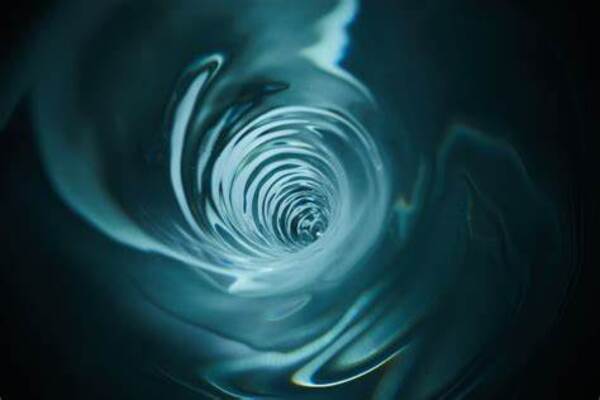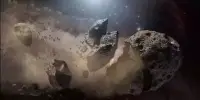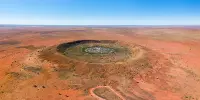Scientists have generated a gigantic quantum vortex in superfluid helium to simulate a black hole, allowing them to study in greater detail how simulated black holes behave and interact with their surroundings.
The University of Nottingham, in partnership with King’s College London and Newcastle University, developed a novel experimental platform known as a quantum tornado. They have generated a massive swirling vortex within superfluid helium that has been chilled to the lowest feasible temperature. The study team demonstrated that quantum tornados mirror gravitational circumstances around revolving black holes by observing minute wave dynamics on the superfluid’s surface. The findings were published in Nature.
The paper’s lead author, Dr. Patrik Svancara from the University of Nottingham’s School of Mathematical Sciences, explains: “Using superfluid helium has allowed us to analyze microscopic surface waves in greater detail and accuracy than our prior studies in water. Because the viscosity of superfluid helium is exceptionally low, we were able to thoroughly analyze their interaction with the superfluid tornado and compare the results to our own theoretical forecasts.”
Superfluid helium contains microscopic things known as quantum vortices, which tend to split apart from one another. In our setup, we were able to trap tens of thousands of these quanta in a compact entity resembling a miniature tornado, resulting in a vortex flow of unprecedented strength in the field of quantum fluids.
Dr. Patrik Svancara
The researchers created a unique cryogenic device capable of holding several liters of superfluid helium at temperatures below -271 °C. At this temperature, liquid helium exhibits remarkable quantum characteristics. These features normally prevent the production of large vortices in other quantum fluids, such as ultracold atomic gases or quantum fluids of light; nevertheless, this system shows how the superfluid helium interface functions as a stabilizing influence for these things.
Dr. Svancara continues: “Superfluid helium contains microscopic things known as quantum vortices, which tend to split apart from one another. In our setup, we were able to trap tens of thousands of these quanta in a compact entity resembling a miniature tornado, resulting in a vortex flow of unprecedented strength in the field of quantum fluids.”
Researchers uncovered intriguing parallels between the vortex flow and the gravitational influence of black holes on the surrounding spacetime. This achievement opens new avenues for simulations of finite-temperature quantum field theories within the complex realm of curved spacetimes.

Professor Silke Weinfurtner, who leads the work at the Black Hole Laboratory where this experiment was developed, emphasizes the significance of this work: “When we first observed clear signatures of black hole physics in our initial analogue experiment back in 2017, it was a watershed moment for understanding some of the bizarre phenomena that are often difficult, if not impossible, to study otherwise. With our more refined experiment, we have pushed this research to the next level, potentially leading to predictions about how quantum fields behave in curved spacetimes around astrophysical black holes.”
This groundbreaking research is funded by a £5 million grant from the Science Technology Facilities Council, distributed among teams at seven leading UK institutions, including the University of Nottingham, Newcastle University and King’s College London. The project has also been supported by both the UKRI Network grant on Quantum Simulators for Fundamental Physics and the Leverhulme Research Leaders Fellowship held by Professor Silke Weinfurtner.
The results of this research will be honored and creatively explored in an ambi exhibition titled Cosmic Titans, which will take place at the Djanogly Gallery, Lakeside Arts, The University of Nottingham, from January 25 to April 27, 2025. The show will feature freshly commissioned sculptures, installations, and immersive art works by notable artists, including Conrad Shawcross RA, as a result of ARTlab Nottingham’s creative collaborations with artists and scientists. The show will combine creative and theoretical investigations into black holes and the origins of our universe.















